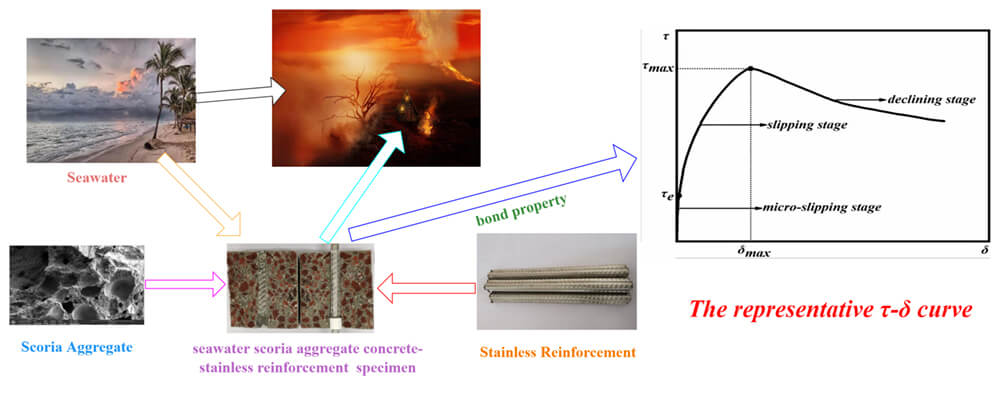 Open Access
Open Access
ARTICLE
Bond of Seawater Scoria Aggregate Concrete to Stainless Reinforcement
Shandong Key Laboratory of Civil Engineering Disaster Prevention and Mitigation, Shandong University of Science and Technology, Qingdao, 266590, China
* Corresponding Author: Yijie Huang. Email:
(This article belongs to the Special Issue: Recycled Concrete Towards a Sustainable Society)
Journal of Renewable Materials 2023, 11(1), 209-231. https://doi.org/10.32604/jrm.2023.020406
Received 22 November 2021; Accepted 25 February 2022; Issue published 10 August 2022
Abstract
This study investigates the bond between seawater scoria aggregate concrete (SSAC) and stainless reinforcement (SR) through a series of pull-out tests. A total of 39 specimens, considering five experimental parameters—concrete type (SSAC, ordinary concrete (OC) and seawater coral aggregate concrete (SCAC)), reinforcement type (SR, ordinary reinforcement (OR)), bond length (3, 5 and 8 times bar diameter), concrete strength (C25 and C30) and concrete cover thickness (42 and 67 mm)—were prepared. The typical bond properties (failure pattern, bond strength, bond-slip curves and bond stress distribution, etc.) of seawater scoria aggregate concrete-stainless reinforcement (SSAC-SR) specimen were systematically studied. Generally, the failure pattern changed with the concrete type used, and the failure surface of SSAC specimen was different from that of OC specimen. SSAC enhanced the bond strength of specimen, while its effect on the deformation of SSAC-SR was negative. On average, the peak slip of SSAC specimens was 20% lower while the bond strength was 6.7% higher compared to OC specimens under the similar conditions. The effects of variables on the bond strength of SSAC–SR in increasing order are concrete type, bond length, concrete strength and cover thickness. The bond-slip curve of SSAC-SR specimen consisted of micro-slipping, slipping and declining stages. It can be obtained that SSAC reduced the curve curvature of bond-slip, and the decline of curve became steep after adopting SR. The typical distribution of bond stress along bond length changed with the types of concrete and reinforcement used. Finally, a specific expression of the bond stress-slip curve considering the effects of various variables was established, which could provide a basis for the practical application of reinforced SSAC.
Graphic Abstract

Keywords
Cite This Article
 Copyright © 2023 The Author(s). Published by Tech Science Press.
Copyright © 2023 The Author(s). Published by Tech Science Press.This work is licensed under a Creative Commons Attribution 4.0 International License , which permits unrestricted use, distribution, and reproduction in any medium, provided the original work is properly cited.


 Submit a Paper
Submit a Paper Propose a Special lssue
Propose a Special lssue View Full Text
View Full Text Download PDF
Download PDF Downloads
Downloads
 Citation Tools
Citation Tools